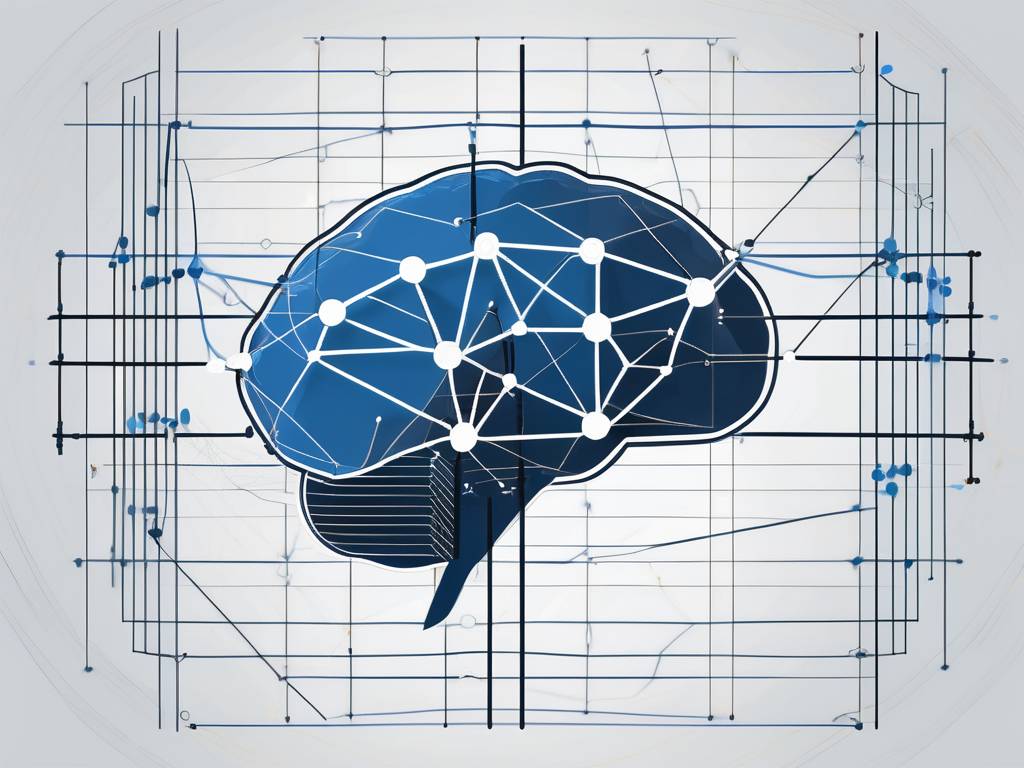Top 10 Machine Learning Interview Questions & Answers
Key Insights
- Machine learning is a crucial technology in today’s world and understanding its basics is vital to future innovation
- Preparing for a machine learning interview requires studying and avoiding common mistakes
- The top 10 machine learning interview questions cover various aspects of data science and the machine learning field
- Answering the top machine learning interview questions requires knowledge of key concepts like supervised vs. unsupervised learning, neural networks, and algorithm selection
Understanding Machine Learning
The Basics of Machine Learning
Machine learning (ML) is a subset of artificial intelligence (AI) that focuses on developing algorithms and models that enable computers to learn and make decisions or predictions without explicit programming. This field is driven by data, as machine learning algorithms leverage historical data to identify patterns and make accurate predictions or perform tasks.
The development of a machine learning model heavily involves the use of training data and testing data. The initial step in this process is data preprocessing, a crucial phase where raw data is cleaned and transformed. This step may involve outlier removal, handling missing or corrupted data, and normalization of the training dataset, which ensures consistency and accuracy in the data analysis.
During the training phase in supervised machine learning, the algorithm is exposed to a labeled dataset, where the correct answers or outcomes are known. The algorithm learns from the training data and adjusts its internal model parameters to minimize errors and maximize accuracy.
Feature selection is another important aspect of machine learning, focusing on identifying key features or variables that significantly influence the prediction or decision-making process. This step aids in reducing data dimensionality, enhancing model efficiency and performance.
After the training phase, model performance is evaluated using a separate testing dataset. This step is crucial for assessing the model’s performance in real-world situations and identifying any of its potential shortcomings. This evaluation guides further refinements and adjustments to enhance the model’s performance.
Types of Machine Learning
Machine learning algorithms are varied, each possessing unique strengths and limitations. There are two primary types: supervised and unsupervised learning. Supervised learning algorithms use labeled data, where each input feature is associated with a specific output label. This method is crucial for tasks where the desired outcome is known and the algorithm learns to predict outputs based on input data.
In contrast, unsupervised learning algorithms are applied to unlabeled data. These algorithms aim to discover hidden patterns or structures within the data, useful in scenarios where the outcomes are not predefined.
Additionally, machine learning models are commonly categorized into regression and classification models. Regression models are employed for predicting continuous numerical values and are instrumental in estimating real-valued outputs like temperatures or prices.
On the other hand, classification models are used for predicting discrete class labels. They are adept at tasks like identifying categories or groups, such as distinguishing between different types of plants or classifying emails as spam or non-spam.
This broad categorization of machine learning models highlights their versatility and extensive applicability across various fields and industries.
The Importance of Machine Learning in Today’s World
In the modern business landscape, the significance of ML cannot be overstated. This transformative technology, renowned for its proficiency in analyzing extensive data sets, recognizing intricate patterns, and delivering precise predictions, is reshaping industries like healthcare, finance, marketing, and transportation.
For business leaders and C-level executives, understanding and harnessing the power of machine learning is crucial. It’s not just about keeping pace with technological advancements; it’s about gaining a competitive edge. By hiring machine learning engineers, companies can leverage data-driven decision-making, streamline operations through automation, craft personalized customer experiences, enhance fraud detection, and optimize overall performance.
Machine Learning in Healthcare
In the healthcare industry, machine learning has been instrumental in diagnosing diseases, predicting patient outcomes, and designing personalized treatment plans. It aids in making more precise diagnoses and enhances patient care. For instance, supervised machine learning assists in understanding the effectiveness of medications, while unsupervised learning is being used to uncover potential diseases, aiding in prevention and early intervention.
Machine Learning in Finance
In finance, ML algorithms are used for credit scoring, fraud detection, and algorithmic trading. These algorithms are adept at processing vast amounts of financial data swiftly, identifying anomalous transactions for fraud prevention, and making informed trading decisions that align with existing market data and predictive analytics.
Machine Learning in Marketing
Marketing professionals leverage AI and machine learning to analyze customer behavior, segment markets, and personalize marketing campaigns. By understanding customer preferences and predicting their needs, businesses can deliver targeted advertisements and offers, resulting in higher conversion rates and customer satisfaction.
Machine Learning in Transportation
The transportation sector benefits immensely from machine learning, especially in route optimization, demand forecasting, and the development of autonomous vehicles. By analyzing historical and real-time traffic data, ML algorithms can recommend the most efficient routes, alleviating congestion, and augmenting transportation efficiency.
Machine learning is a dynamic and rapidly advancing field, characterized by the development of multiple machine learning models and an array of innovative techniques. As the availability of data continues to grow and computing power increases, the potential applications of machine learning are expanding, promising a future where intelligent systems are integrated into every aspect of our lives.
Preparing for Your Machine Learning Interview
How to Study for a Machine Learning Interview
Studying for a machine learning interview requires a focused and structured approach, given the complexity of the field. Start by by understanding the specific requirements of the job. Carefully read the job description to identify the key machine learning skills and knowledge needed, and research the company and its current use of machine learning. This initial step is crucial for tailoring your preparation effectively.
The next phase of your preparation should involve a thorough revision of the fundamental concepts in machine learning, statistics, and algorithms. Essential topics include supervised and unsupervised learning, neural networks, decision trees, support vector machines, clustering, regression analysis, and probability theory. If you’re applying for a more advanced role, delve deeper into complex areas like deep learning, natural language processing, and reinforcement learning. Staying updated with the latest trends and research in machine learning is also important, as it shows your engagement with the field and your knowledge of current developments.
Programming skills are a cornerstone of machine learning, so ensure you’re proficient in relevant languages such as Python, R, or Java. Practice coding common machine learning algorithms and data manipulation tasks, aiming for efficiency and clarity in your code. Additionally, engage in hands-on projects, either personal or open-source, to solidify your practical skills. Be prepared to discuss these projects during your interview, focusing on your specific contributions, the challenges encountered, and how they were resolved.
Don’t overlook the importance of soft skills and experience. Prepare for behavioral questions by reflecting on past work experiences and your approach to teamwork and problem-solving. Conduct mock interviews to get comfortable with the interview format and to improve your communication skills. Remember, it’s crucial to be clear in your explanations and honest about your knowledge and skills.
Common Mistakes to Avoid in Machine Learning Interviews
Optimizing your performance in a machine learning interview requires awareness of common pitfalls and how to avoid them. One of the key mistakes candidates often make is not having a firm grasp on the fundamental concepts of machine learning. Interviewers expect a strong foundational understanding of core principles such as model evaluation metrics, overfitting, underfitting, and the bias-variance tradeoff. It’s crucial to not only comprehend these concepts but also to apply them adeptly in various scenarios.
Communication skills are equally important in a machine learning interview. The ability to articulate complex ideas in a clear and concise manner is essential. This means breaking down intricate machine learning concepts into simpler terms and avoiding technical jargon that could confuse the interviewer. Practice explaining these concepts in a way that would be understandable to someone without a technical background.
Another common error is not adequately showcasing problem-solving skills and practical machine learning experience. Discuss the projects you’ve worked on, the specific challenges you encountered, and how you addressed them. This demonstrates your practical knowledge and your approach to real-world problems. In addition, it’s important to recognize the business implications of machine learning and demonstrate an understanding of how your technical work can impact and drive business objectives.
Preparing for the technical aspects of the interview is also vital. Many machine learning interviews involve coding and algorithm questions. Ensure that you are comfortable with coding, particularly in languages like Python, and can discuss and implement various machine learning algorithms and data structures.
The Top 10 Machine Learning Interview Questions
Preparing for a machine learning interview involves anticipating the types of questions you may encounter. While the following questions are a solid starting point, they represent only a portion of what you might be asked.
Question 1: Define Machine Learning
Machine learning is an advanced segment of AI focused on developing algorithms capable of learning and making decisions from data without being explicitly programmed. This field encompasses a variety of statistical techniques that enable computers to improve their performance on a specific task with data, embodying the essence of predictive analytics and data-driven decision making.
Question 2: Explain Supervised Learning vs. Unsupervised Learning
Supervised learning involves training a machine learning model on a labeled dataset, where each example is paired with the correct output. The model then learns to predict the output from the input data. Unsupervised learning, in contrast, deals with unlabeled data. The model learns to identify inherent patterns and relationships in the data and is often used for clustering or anomaly detection tasks.
Question 3: Discuss the Role of Data in Machine Learning
In machine learning, data acts as the cornerstone for model development and accuracy. The model’s ability to learn and make accurate predictions hinges on the quality (accuracy, completeness, relevance), quantity (sufficient data to uncover patterns), and variety (diverse data sources) of the training data. Ultimately, poor quality data leads to unreliable models.
Question 4: Describe a Neural Network
A neural network is a sophisticated machine learning model that mimics the workings of the human brain, composed of layers of interconnected nodes or neurons. Each neuron receives input, processes it using a weighted sum followed by a non-linear activation function, and passes the output to the next layer. Neural networks are particularly adept at handling complex, non-linear relationships within data.
Question 5: What is Deep Learning?
Deep learning is a specialized subset of machine learning that employs deep neural networks with multiple hidden layers. These layers enable the model to learn complex, hierarchical representations of data, distinguishing deep learning from traditional machine learning, which typically deals with shallower architectures. Deep learning excels in tasks like image and speech recognition, where capturing high-level abstractions from data is crucial.
Question 6: Explain the Concept of Overfitting
Overfitting is a common pitfall in machine learning where a model learns not only the underlying patterns in the training data but also the noise and outliers. This leads to a model that performs exceedingly well on the training data but poorly on unseen data. Overfitting is often addressed using techniques like cross-validation, regularization, and pruning in decision trees.
Question 7: Discuss the Importance of Algorithm Selection
Selecting the appropriate machine learning algorithm is a critical decision that impacts the effectiveness of a model. The choice depends on various factors, including the size and type of data, the task at hand (classification, regression, clustering), and the computational complexity. Understanding the trade-offs between bias and variance, as well as the algorithm’s assumptions about data, is essential for effective algorithm selection.
Question 8: How Do You Validate Machine Learning Models?
Validating machine learning models involves techniques that assess the model’s ability to generalize to new data. Advanced methods include k-fold cross-validation, where the data is divided into k subsets, and the model is trained and tested k times, each time with a different subset as the test set. Other techniques include using a validation set, bootstrapping, and employing metrics include the F1 Score, precision, recall, and ROC-AUC curves for evaluation.
Question 9: What is Reinforcement Learning?
Reinforcement learning, a unique type of machine learning, involves an agent learning to make decisions through actions in an environment, guided by feedback as rewards or penalties. It’s structured as a Markov Decision Process, essential in fields requiring sequential decision-making, such as robotics, gaming, and navigation. Central to this are the exploration-exploitation tradeoff, designing effective reward functions, and employing learning algorithms like Q-learning and policy gradients.
Question 10: Discuss the Future of Machine Learning
The future of machine learning holds immense promise for enhancing efficiency, accuracy, and innovation across a broad spectrum of applications. It is set to improve decision-making processes, automate complex tasks, and provide deeper insights through data analysis. Machine learning’s integration with cutting-edge technologies like quantum computing is likely to open up unprecedented possibilities in computational power and problem-solving capabilities.
Final Thoughts
Machine learning is not just about algorithms and data; it’s about leveraging these tools to drive innovation, solve complex problems, and create impactful solutions in various domains. As you prepare for your machine learning interviews, keep in mind the broader implications of your work and the potential to contribute to meaningful advancements in technology and society. Good luck!
Questions?
-
How do machine learning interview questions contribute to evaluating a candidate's skills?Toggle questionMachine Learning interview questions provide insight into a candidate's proficiency in key areas such as algorithmic design, model evaluation, and problem-solving. The responses help assess the candidate's ability to approach complex issues and apply machine learning techniques effectively, along with their overall capability as a machine learning engineer.
-
Are machine learning interview questions more focused on theory or practical application?Toggle questionMachine learning interview questions often strike a balance between theoretical understanding and practical application. Interviewers aim to evaluate not only the candidate's theoretical knowledge of algorithms, but also their capability to implement and adapt these concepts in real-world scenarios.
-
Should the ethics of machine learning be discussed in an interview?Toggle questionAddressing the ethical implications of data science during a machine learning interview is important, as it demonstrates your awareness of the responsibilities that come with handling data and developing algorithms. Talk about the challenges of bias in data sets and algorithms, and share examples of how you've worked to create unbiased models or the steps you would take to ensure fairness in your models.
-
How can I demonstrate my understanding of data privacy and protection in a machine learning interview?Toggle questionDiscuss how you responsibly collect, store, and process data. Also highlight any experience you have with data encryption, anonymization techniques, and adherence to regulations like GDPR or HIPAA.
-
What kind of projects or experiences should I highlight in a machine learning interview?Toggle questionFocus on projects where you applied machine learning concepts. This could include academic projects, internships, or personal projects. Be prepared to discuss the problem, your approach, the tools you used, and the outcome.

 hello@westlink.com
hello@westlink.com  (866) 954-6533
(866) 954-6533  700 N Colorado Blvd,
700 N Colorado Blvd,







Comments